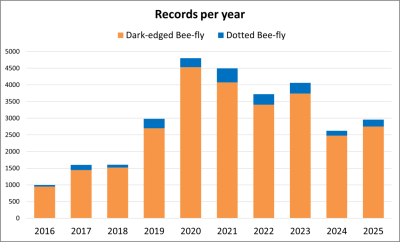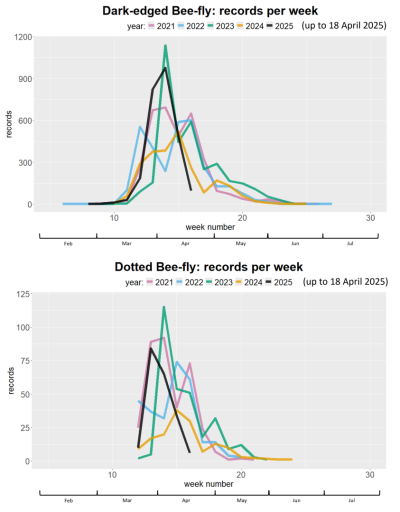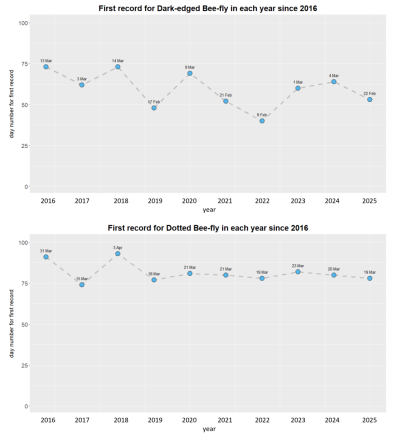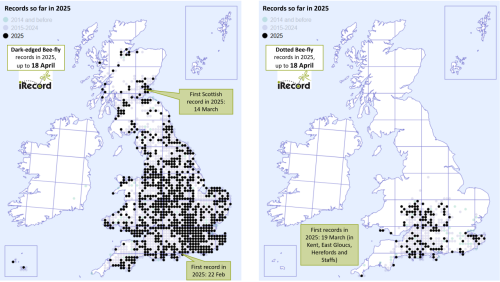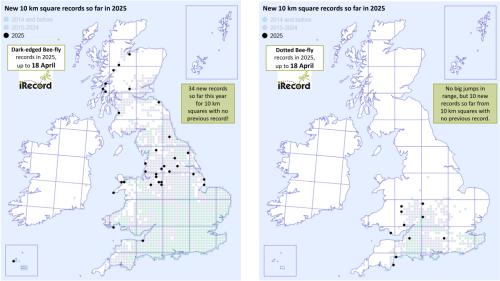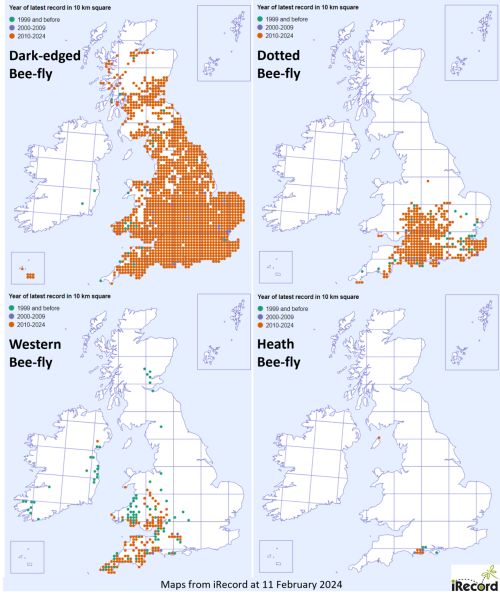Bee-fly Watch has been running since 2016, and since then nearly 30,000 records of the four species of Bombylius bee-fly have been contributed. The main purpose of Bee-fly Watch is to encourage people to enjoy watching bee-flies! In addition, the records help us to monitor changes in the distribution and flight period of the flies.
The two early spring species are the ones most frequently seen, and in mid-April 2025 we have already had more records than we dod for the whole of 2024! This reflects the much sunnier conditions over much of the UK in spring 2025 compared to 2024.
The four species are:
| English name | Scientific name | Flight period and distribution | Earliest ever sighting |
|---|---|---|---|
| Dark-edged Bee-fly | Bombylius major | A spring species (most records in March–May), widespread and common across the UK except in upland areas | 9 February (in 2022) |
| Dotted Bee-fly | Bombylius discolor | A spring species (most records in March–May), fairly common in southern parts of England and Wales, range expanding northwards | 15 March (in 2017) |
| Western Bee-fly | Bombylius canescens | A summer species (most records in May–July), fairly common in Wales and south-west England, and appears to have been lost from the more northerly parts of its former range | 26 April (in 2020) |
| Heath Bee-fly | Bombylius minor | A summer species (most records in July–August), restricted to sandy habitats in Dorset and the Isle of Man | 23 June (in 2020) |
Flight periods
Thanks to the Bee-fly Watch records, we know that the timing of bee-fly emergence each year is closely tied to the temperature and sunshine levels in early spring. In 2024 we had a relatively cool and wet spring, and bee-flies were reported in much lower numbers than in 2023. In contrast, 2025 has seen warm sunny weather in much of the UK during March and April, and we bee-fly records have been much more numerous, with an extended peak in late March and early April.
The first dates for the two spring species in 2025 were not exceptionally early, but they were seen little earlier than the previous two years.
Distribution
Here are the records for 2025 so far (up to 18 April):
The have not been any big jumps in range during 2025, but there have been quite a lot of new records from 10 km squares where the spring bee-flies had not previously been reported. For Dark-edged Bee-fly this probably just represents better recording and more recorders getting involved, but for Dotted Bee-fly there are signs of the range continuing to expand a little around the edges:
See the records for 2025 as they come in, via iRecord:
Distribution maps for records in all years up to 2024 are shown below, based on all the recording scheme records. To explore the maps in more detail visit the map pages on iRecord:
| Dark-edged Bee-fly | Dotted Bee-fly | Western Bee-fly | Heath Bee-fly |

